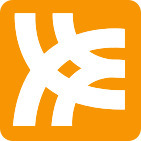I am very proud to announce that The Stanford History Group will be hosting the first #sschat of 2013 on Monday, January 7th at 7 PM EST. They will be discussing reading and writing in history courses. Please join us on #sschat! 
The Sanford History Educaton Group has created two wonderful programs: Reading Like a Historian and Beyond the Bubble. The Reading like a historian curriculum engages students in historical inquiry. Each of their 65 lessons revolve around a central historical question and features primary documents modified for students of all ability levels. Instead of memorizing historical facts, students evaluate the trustworthiness of multiple perspectives on issues from King Philip’s War to the Montgomery Bus Boycott, and make historical claims backed by documentary evidence. Beyond the Bubble utilizes the digital archives of the library of Congress to create a new form of history assessments. Their goal is to “go beyond the bubble” by offering teachers an easy-to-use assessment that captures student’s knowledge and interpretation of critical thinking instead of memorization of facts.




